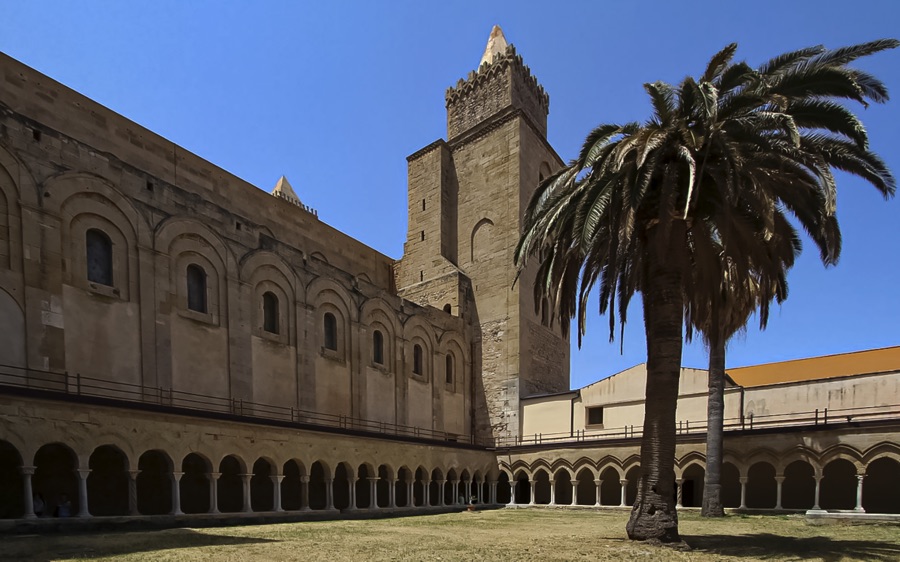The central courtyard of the cloister is canonically defined as a garden, in which no flower essences are planted because they are deciduous; instead, the flowers are sculpted in the capitals, in the eternal nature of the stone.
The garden, according to tradition, is divided into four parts where four symbolic trees are planted, the fig, the pomegranate, the olive and the palm. In the words of Honorius of Autun: “Diversae arbores fructiferae sunt diversi libri Sanctae Scripturae”.
The first two plants, refer to the Old Testament, as they are considered to be historical. The fig tree is located in the south-east and symbolises the Garden of Eden. The pomegranate tree is located in the north-east the garden of the Song of Songs.
For the New Testament, the presence of symbolic plants is notable. The Olive tree, an allegory of Gethsemane and the future Easter, is located to the north-east, while the Palm tree, in the garden of the Apocalypse, is located to the south-west.